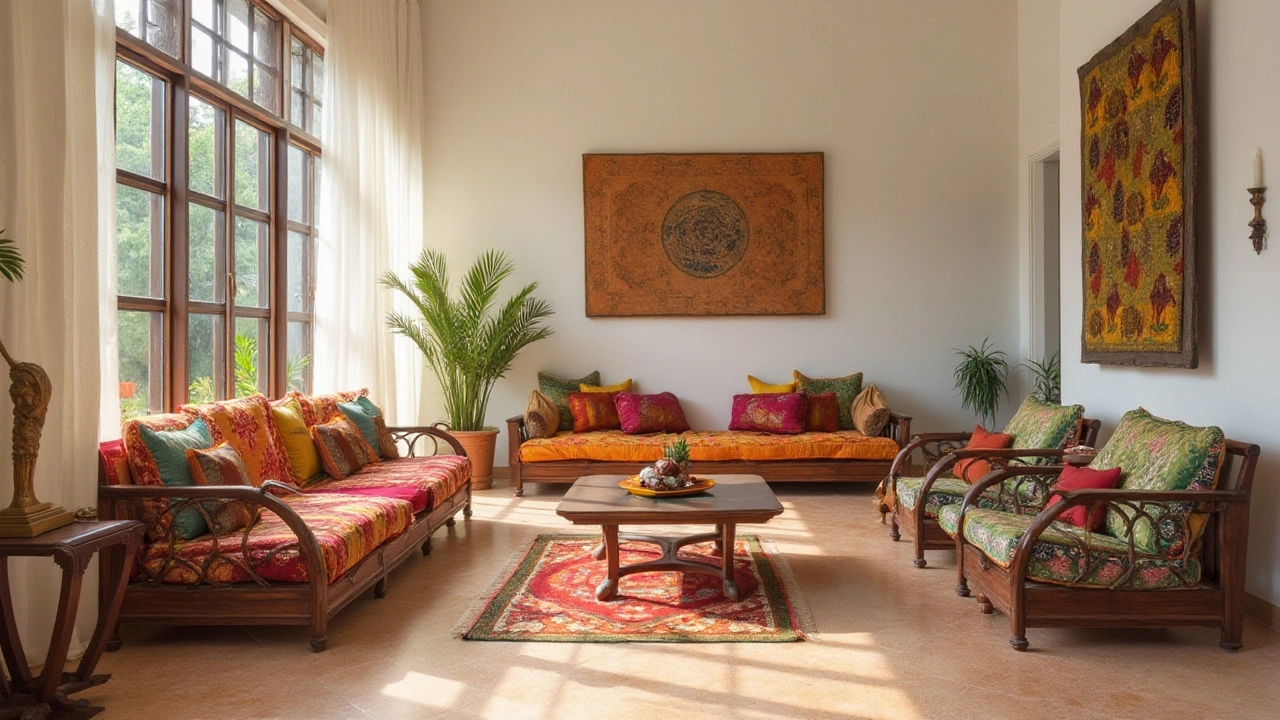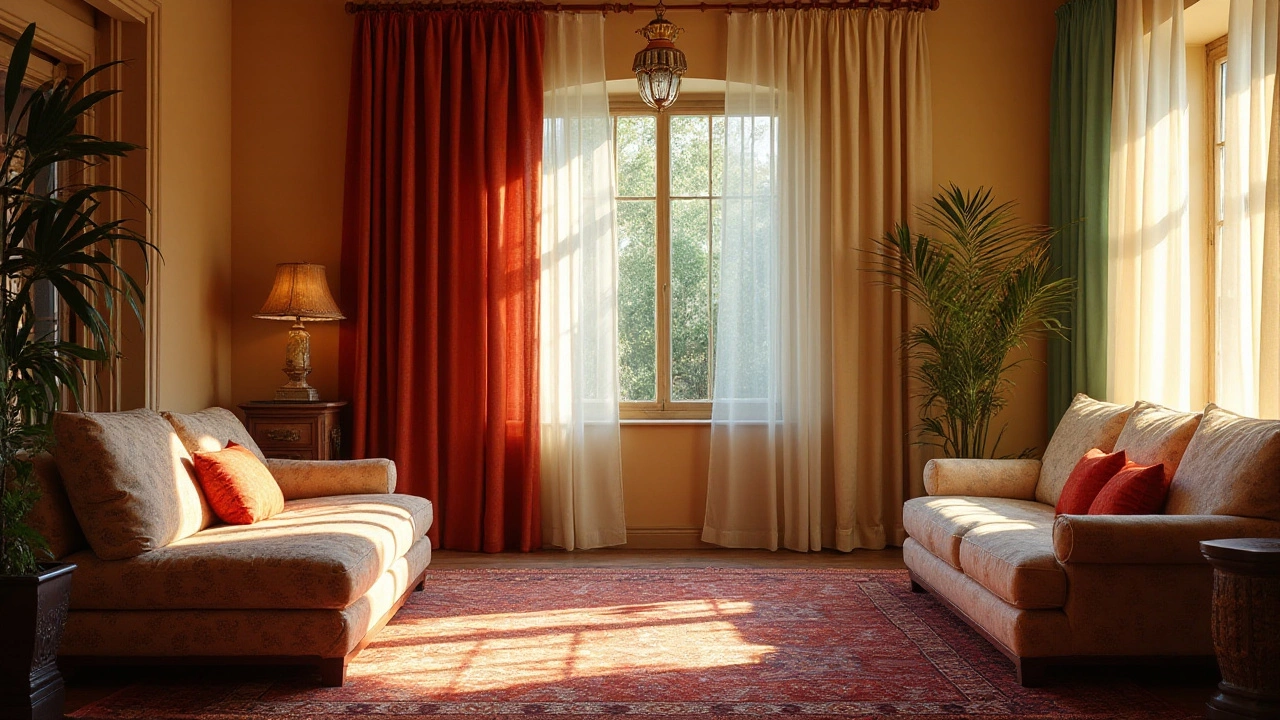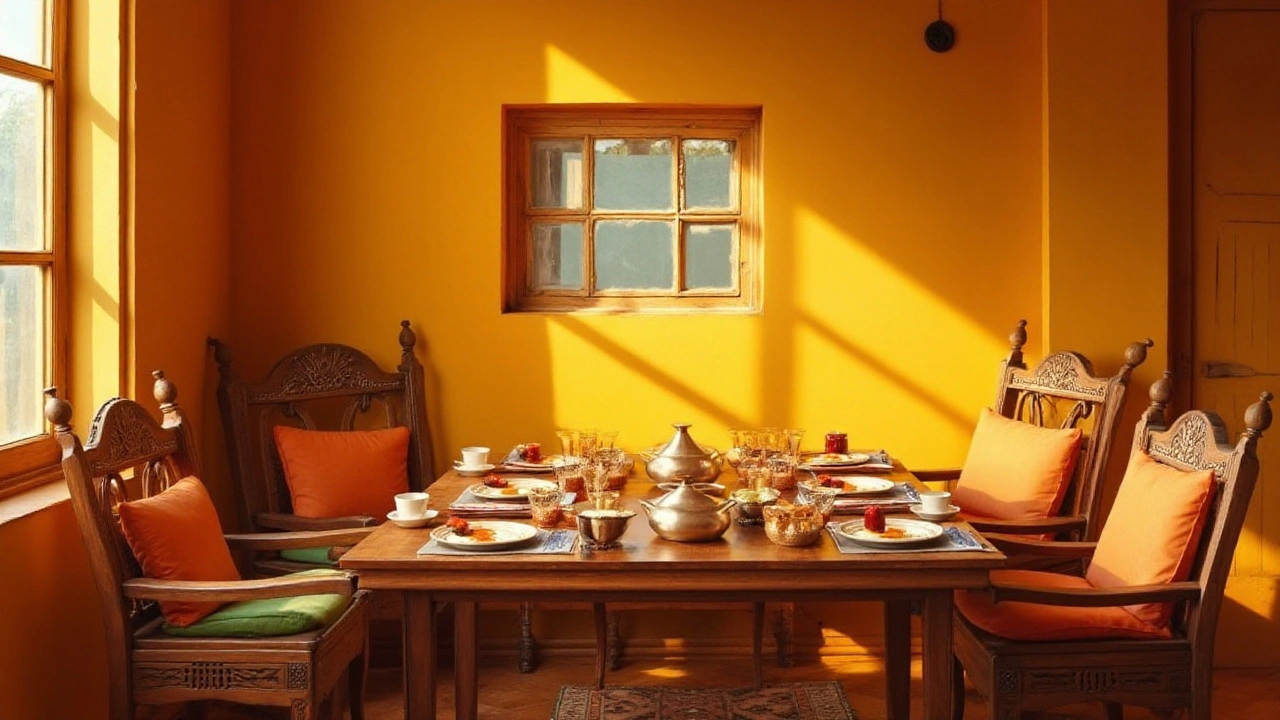The Fundamentals and Appeal of Modern Interior Design
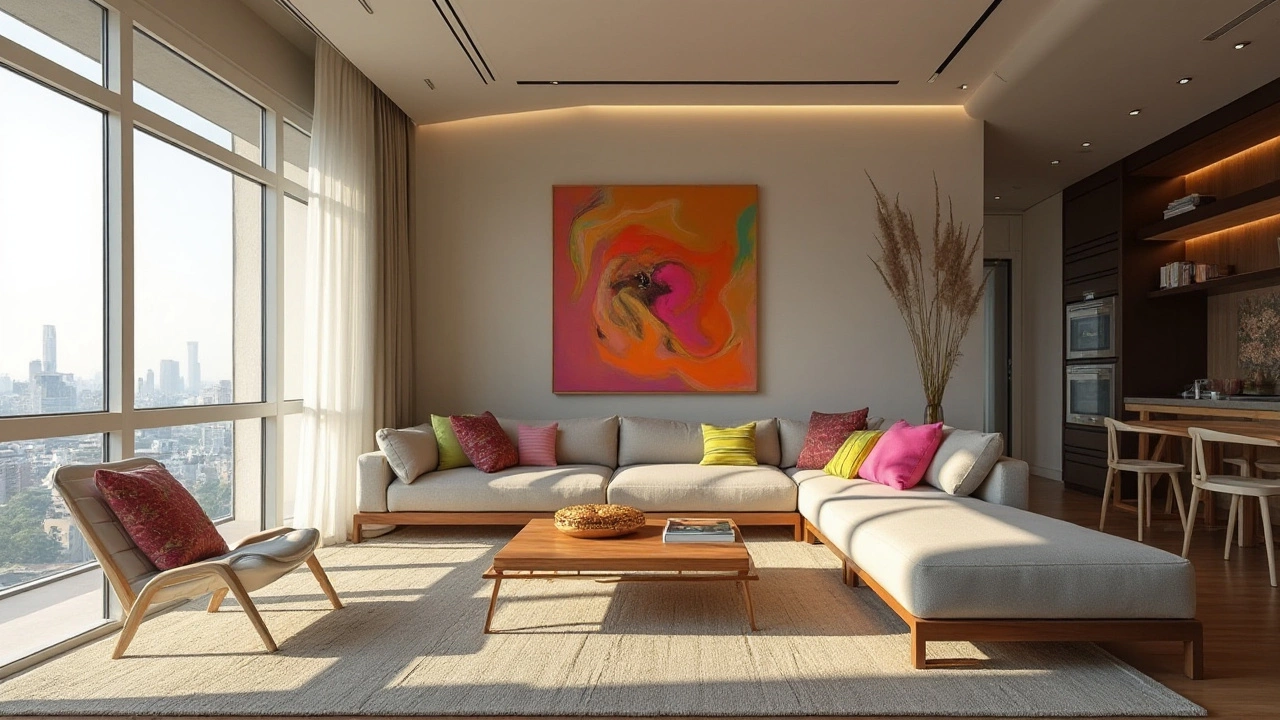
Modern interior design holds a special charm with its uncluttered look and thoughtful arrangements. Defined by its emphasis on a harmonious blend of practicality and beauty, this style has roots reaching back to the early 20th century but continues to thrive with new age innovations.
Unlike other styles, modern interior design favors simplicity over opulence. With an affinity for straight lines, neutral palettes, and open spaces, it eliminates the unnecessary while embracing functional elegance. Its appeal lies partly in its adaptability—melding with evolving tastes and technologies while still preserving a timeless sense of order and calm.
In the following sections, discover the core elements that make modern interior design an enduring favorite, and gain practical tips to transform your own home into a space of serene modernity.
- The Origins of Modern Interior Design
- Key Characteristics and Elements
- Incorporating Technology and Innovation
- Balancing Functionality and Aesthetics
- Using Color and Textures Effectively
- Tips for Creating a Modern Space at Home
The Origins of Modern Interior Design
Modern interior design has a remarkable history that intertwines with cultural shifts and technological advancements in a fascinating way. This design movement sprouted in the early 20th century as societies underwent massive transformations from the impact of industrialization. The core idea revolved around rejecting overly ornate furnishings and adopting a simpler, more practical style. It evolved from a desire to break away from the cluttered, heavy designs of the Victorian era, which dominated prior to the 1900s. This shift was greatly influenced by the Bauhaus movement, which began in Germany, focusing on the unity between form and function, a principle that would define modern interior design. During this time, the availability of new materials like steel, glass, and concrete allowed architects and designers to experiment with novel structural approaches, leading to a revolution in both architecture and interior design.
The beginnings of modern interior design were also deeply connected to the works of influential names such as Le Corbusier and Ludwig Mies van der Rohe. Their work demonstrated the desire for simplicity and open-air environments in spaces. This philosophy wasn't just about aesthetics; it had practical benefits as well. Open spaces and minimalistic designs helped in maximizing natural light and reducing maintenance costs. Another exciting influence came from the art movements of the time, such as De Stijl and Art Deco, which introduced bold geometric shapes and dynamic forms into the design narrative. Modern interior design, therefore, embodies a collective ethos of improvement and efficiency while maintaining a sense of human touch and warmth. It was a time of dynamic exchange where ideas transcended continental boundaries, shaping the global aesthetic discourse.
As the 20th century progressed, the modern style continued to develop with each decade's unique challenges and technological breakthroughs. Iconic furniture designs from the 1950s, such as the Eames Lounge Chair, became emblematic of this era. These designs didn't just serve a practical purpose but also became cultural symbols, reflecting a new way of thinking about leisure and comfort. The development of modern design was also influenced by economic factors; after the World Wars, there was an increased focus on affordability and the mass production of furniture that could be easily accessible. The modern interior thus stood as a response to new world realities, showcasing resilience and the ability to adapt to changing circumstances while still providing a nurturing environment.
"The old traditions have entered a stage of permanent disintegration, and a new approach comes with modern architecture," declared Walter Gropius, founder of the Bauhaus school. His profound understanding of this transformative era in design still echoes in today's interpretation of modern interiors.
Understanding the origins of modern interior design allows us to appreciate not only its aesthetic simplicity but also its deep-rooted connection with human needs and technological advancements. As designers and homeowners continue to draw from its rich history, modern design remains ever-relevant, evolving alongside us while staying true to its roots. Whether through minimalist spaces that invite tranquility or smart use of technology to enhance liveability, this style perpetuates the idea that thoughtful design can enrich everyday life.
Key Characteristics and Elements
Exploring the essence of modern interior design involves diving into its distinctive features that set it apart from other styles. At its core, the modern style embraces minimalism and a sense of openness that delights the eye and mind. This doesn't just mean barren spaces; it's about creating rooms that have a comforting sense of space and airiness. Clean lines, both in architecture and furniture design, are pivotal. These lines are complemented by a focus on form and function, ensuring that every piece serves a purpose and adds to the elegance of the room.
Materials such as metals, glass, and concrete often play significant roles, providing a sleek finish that celebrates industrial elements. You'll frequently find designers incorporating large windows, using open floor plans, and choosing neutral colors punctuated by vibrant accents. These pops of color could appear in the form of artwork, a statement couch, or a throw pillow, all adding depth without cluttering the visual aspect. A quote by renowned architect Ludwig Mies van der Rohe, "Less is more," beautifully encapsulates the modern ethos, emphasizing the power of simplicity.
In terms of furnishings, the emphasis is on streamlined shapes and a limited palette of textures. Woods with straight grains, glossy metal surfaces, and smooth leathers are common materials. These elements coalesce into a sophisticated yet inviting environment that feels genuinely livable. Lighting also plays a critical role—strategically placed lighting can accentuate interesting architectural features and offer both utility and ambiance in equal measure.
The beauty of modern interior design lies in its adaptability. It harmonizes well with sustainable practices, embodying the contemporary movement towards eco-friendliness. Integrating technology seamlessly into the design is another critical aspect, like smart home systems that enhance convenience and efficiency without disrupting the design flow. In recent statistics, it's shown that homes with a modern edge tend to attract younger buyers, leading them to invest more in smart home technology as a part of their living environment.
"In modern design, every element has a voice and every voice tells a story of functionality and form," says interior designer Nate Berkus.
This modern alignment with technology and efficiency, balanced with an eye for aesthetics, makes it an enduring choice for those looking to create spaces that are both beautiful and functional. As more people embrace this style, we see a trend towards using bold art pieces and clever arrangements of plants to add personality and warmth, proving that modern design is as versatile as it is visually striking.
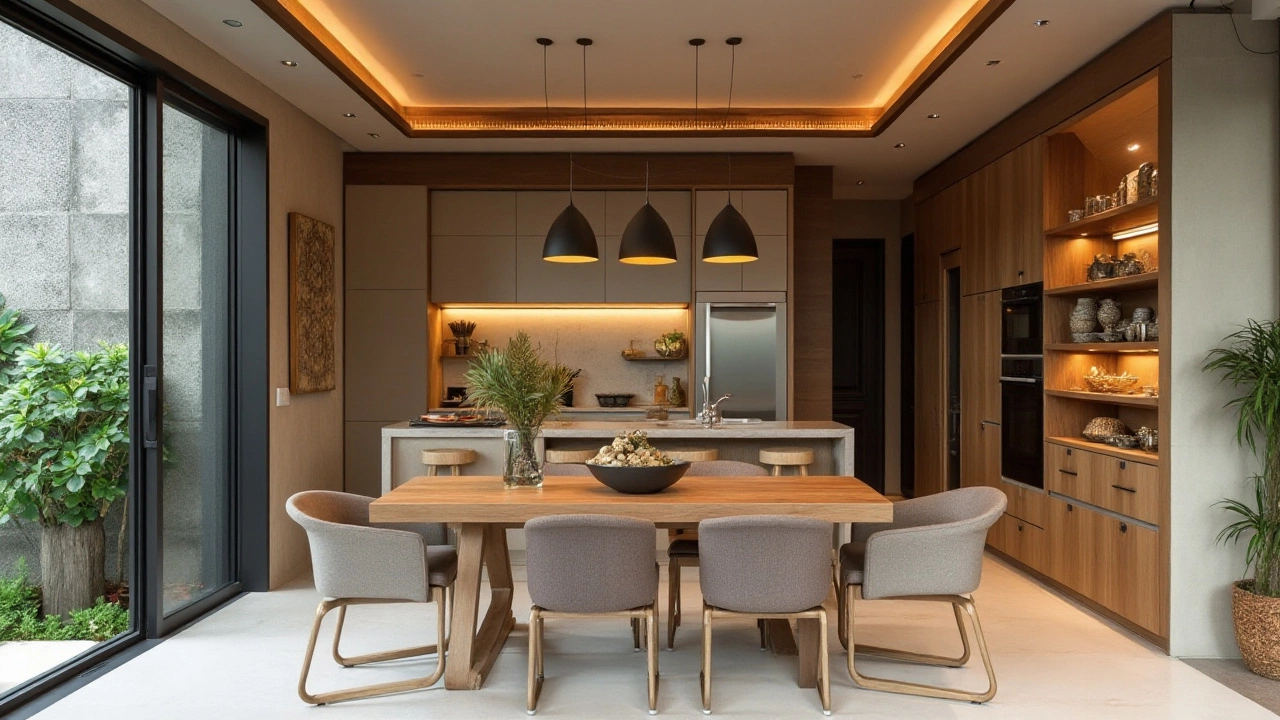
Incorporating Technology and Innovation
In today's ever-evolving world, seamlessly blending technology into our living spaces is more important than ever. Modern interior design embraces this integration, ensuring homes are not only aesthetically pleasing but also smart and efficient. One of the most defining features of modern interiors is their ability to incorporate advanced technology in a way that goes hand-in-hand with the ethos of simplicity and functionality. From automated lighting systems that adjust with the time of day to climate control solutions that sync with your preferences, the possibilities are endless.
Many homes are now equipped with smart assistants that not just control your home's ecosystem but also enhance security with cutting-edge surveillance solutions. As author Adam Rogers of Wired explains, “Technology isn’t about what you adopt, it’s about how you adapt.” This sentiment reflects the contemporary design philosophy where technology should enhance life without overwhelming it. The rise of IoT devices, from refrigerators that alert you when your groceries are low to advanced audio systems that provide concert-like experiences, is driving this change. In embracing these advancements, modern design remains true to its roots—prioritizing convenience and elegance.
Incorporating modern interior design also means understanding the balance between technology and human comfort. While tech brings in automation and ease, design continues to favor human-centric features like ergonomic furniture and acoustically optimized spaces. This human-first philosophy guides innovations such as adjustable workbenches that transform home offices into productivity powerhouses. To illustrate, many designers have turned to modular desk systems to reduce strain and enhance efficiency, responding dynamically to both individual needs and spatial constraints.
The use of sustainable and eco-friendly technology also plays a pivotal role. LED lighting, which is cost-effective and environmentally conscious, dominates modern interiors. Additionally, the introduction of solar panels and home-energy management systems is increasing fast, allowing homes to run on renewable energy. This not only benefits the environment but also reduces long-term costs for homeowners, aligning with modern interior design's essence of practicality. By encouraging the use of such tech innovations, today's homes are becoming more than mere shelters—they're evolving into sustainable sanctuaries.
For homeowners seeking to infuse contemporary style into their spaces, considering the latest in home tech is crucial. Start by assessing your home's current tech landscape: is your internet robust enough to support smart technologies? Are there areas where tech could reduce energy consumption or improve the quality of life? By answering these questions, you can create a roadmap to upgrade your space. As with any design choice, the key is to blend technology subtly with the existing decor, ensuring it enhances rather than disrupts the established vibe. Ultimately, modern interior design, when intertwined with cutting-edge technology, not only modernizes living spaces but enriches the quality of life.
Balancing Functionality and Aesthetics
Modern interior design revolves around the delicate balance between functionality and aesthetics. This balance is not just about creating a visually appealing environment but also ensuring that every element serves a practical purpose. The foundation of modern design rests on the mantra that beauty emerges from utility. This means that a piece of furniture is not just meant to look good; it should also function well in the context of daily life. Consider how a sleek coffee table with hidden storage provides both a clean line—reflecting modern minimalism—and space to tuck away magazines, creating a clutter-free area.
The evolution of smart furniture plays a significant role in maintaining this balance. As the demands of contemporary living change, many design solutions have emerged that cater to smaller urban spaces. For instance, wall beds that fold away seamlessly during the day transform bedrooms into spacious living areas. This transformation doesn't sacrifice warmth and style; instead, it marries them with convenience. According to interior designer, Kelly Wearstler,
“The best interiors are layered, balanced, and carry a sense of the unexpected.”Such layers often come through intelligent design choices that do not force homeowners to choose between form and function.
Color and texture are pivotal in establishing this harmony between functionality and aesthetics. While modern interiors typically lean toward neutral and calming palettes, introducing vivid accents through throw pillows or art can inject personality into the space without disrupting its function. Textures, too, add depth and warmth, turning hard lines into inviting spaces. Consider a living room where a bold rug infuses warmth, breaking the monotony of cold tile flooring. These choices exemplify how aesthetics complement practicality in modern design.
Integrating Technology
Another critical element in this balance is the integration of technology. With the increasing need for connectivity, homes are becoming smarter, and interior design is adapting. Solutions like wireless chargers embedded within countertops or smart lighting systems that adjust based on ambient light help in maintaining both style and utility. This evolution reflects the modern design principle where technology doesn't stand out but assimilates seamlessly into the interior's framework. According to a survey by the National Association of Home Builders, more than 50% of homes incorporate smart tech features, directly influencing design choices that marry tech with aesthetic appeal.
Ultimately, the harmony between functionality and beauty in modern interiors is a testament to thoughtful design. It’s about creating a space that not only looks stunning but also invites the user to interact with it comfortably and intuitively. By maintaining this balance, modern interior design continues to offer an appealing and sustainable approach to living in the contemporary world.
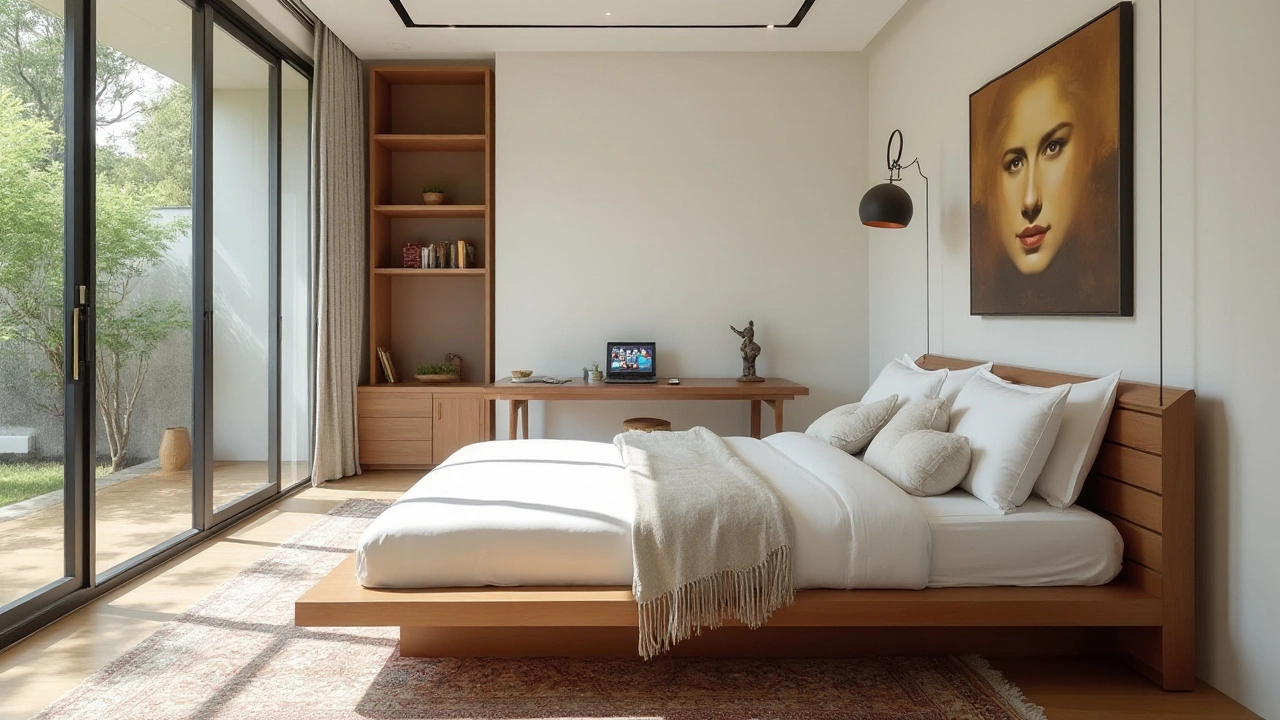
Using Color and Textures Effectively
Colors and textures are the soul of modern interior design, each element chosen with intention to evoke a sense of calm or ignite creativity within a space. The modern style leans towards neutral tones as its base, using shades like whites, grays, and beiges to create a clean canvas. These colors establish an airy and expansive atmosphere, making rooms feel larger and more inviting. However, the magic often happens when these neutral backdrops are punctuated with bolder colors and varied textures, strategically impacting the ambiance.
In modern decor, accent colors play a crucial role. Consider a room that utilizes a predominantly neutral color palette: by introducing visually striking elements, such as a bright red wall art piece or a teal upholstered chair, you not only add personality but also guide the viewer's gaze through the space. This thoughtful contrast is particularly effective in not overwhelming the senses while still infusing the room with vibrancy. Likewise, natural materials like wood, stone, and metals are celebrated in modern spaces, adding rich textures that enhance both visual and tactile experiences.
When textures are considered, the approach is both tactile and visual. The use of smooth and reflective surfaces, such as glass or polished metals, can reflect light and make a space seem brighter and more modern. On the other hand, textures like rough stone, raw concrete, or woven fabrics introduce depth and interest. This interplay between smooth and rugged, light and dark, can transform a simple room into a dynamic setting. To achieve this, many designers recommend layering textures thoughtfully, be it through textured rugs on bare floors or varying elements on walls and ceilings.
To illustrate the balance between color and texture, it's helpful to consider the advice of renowned interior designer Kelly Wearstler, who often emphasizes the importance of contrast. She believes that "layering rich textures and mixing patterns with restraint" is key to achieving harmony in modern interiors. By juxtaposing materials like polished stone with rustic wood, or sleek metals with soft textiles, even the most minimalist environments can offer complex and engaging interiors.
An effective way to decide on your palette and textures is to collect sample swatches and create mood boards. This visual planning helps you to anticipate the overall feel of the space before committing to any decisions. Additionally, incorporating a variety of lighting can enhance the impact of your chosen materials. For instance, the way a pendant light casts shadows on a textured wall can change the room’s atmosphere entirely. A practical tip is to always test your colors and textures under different lighting conditions to fully understand their effect.
Finally, maintaining simplicity while experimenting with home decor allows the textures and colors to shine without turning chaotic. This balance is a cornerstone of modern design; it respects minimalism but isn’t afraid to make bold statements through its use of strategic colors and diverse materials. The goal is to achieve a space that feels both refreshing and architecturally interesting, leaving room for personal expression while maintaining a sense of cohesion throughout the home.
Tips for Creating a Modern Space at Home
Designing a modern space in your home isn't just about adding new furniture or painting your walls. It's an evolving process that requires a deep understanding of minimalism and functionality in harmony. Start by focusing on open floor plans that allow for a smooth flow of light and energy. Consider how light interacts with different parts of your home throughout the day. By embracing natural lighting, you can create a serene and inviting ambiance that typifies modern interior design. Many modern homes utilize large windows without heavy drapes or curtains, ensuring that spaces are well lit. Once you harness natural light, the goal is to maintain an unobstructed path for it. Arrange the furniture to support this fluidity, ensuring that pieces do not interrupt the visual circuit established by light.
Modern interior design places a strong emphasis on neutral color schemes that foster calmness and balance. While whites, greys, and muted pastels form the base palette, don't shy away from using bold hues as accents. Consider a striking red vase or a azure throw to add personality without overwhelming the design. The key lies in balance, using bold colors sparingly amid neutral backdrops to avoid disrupting space harmony. When it comes to selecting colors, psychological impacts come into play. Cooler tones can instill tranquility, ideal for relaxation areas such as bedrooms or reading nooks. Meanwhile, warmer shades, although used sparingly, can energize areas like kitchens or entertainment spaces.
Material selection is another critical factor in modern design. Prioritize natural elements like wood, stone, and metal, which give a rich texture contrast to the sleek lines of furnished items and surfaces. High-gloss finishes together with matte textures create interest and depth, crucial in ensuring that minimalism doesn't verge on monotony. With modern designs, layered textures act as subtle complements to minimalistic layouts, such as a smooth leather sofa paired with a textured woolen rug, or a polished stone tabletop placed on a rustic wooden base. Each piece of furniture should serve a purpose, avoiding clutter by choosing versatile items such as a storage ottoman or a fold-out desk. These types of furniture reduce visual noise and maximize functionality.
Technological integration is essential in the contemporary household. Smart technology should seamlessly blend into your design, appearing as part of the natural environment rather than an afterthought. Use smart lighting systems that adjust to your lifestyle, or thermostats that regulate temperature efficiently. Integration extends to other elements, like discrete sound systems or invisible chargers, which maintain the cleanliness of your design.
"Technology and modern interior design go hand in hand, enhancing both the aesthetic elements and functional living experiences," says renowned architect Gary Chang. In this era, technology isn't just about connectivity but also about complementing visual and practical aspects of home design.
One should never underestimate the power of artwork and accessories in modern spaces. These are not mere ornaments, but thoughtful elements that complete the atmosphere. Choose large-scale, abstract artwork that contrasts with the minimalist style, offering a focal point without overwhelming the room. Likewise, curated collections of smaller artifacts can provide nuanced details and connections to personal stories or global cultures. Be sure to leave enough negative space, allowing the eye to rest and the artwork to breathe, creating an environment where less truly is more. Remember that every element, from a cushion to a candlestick, should echo the overall theme and contribute to the space in terms of both form and function.
